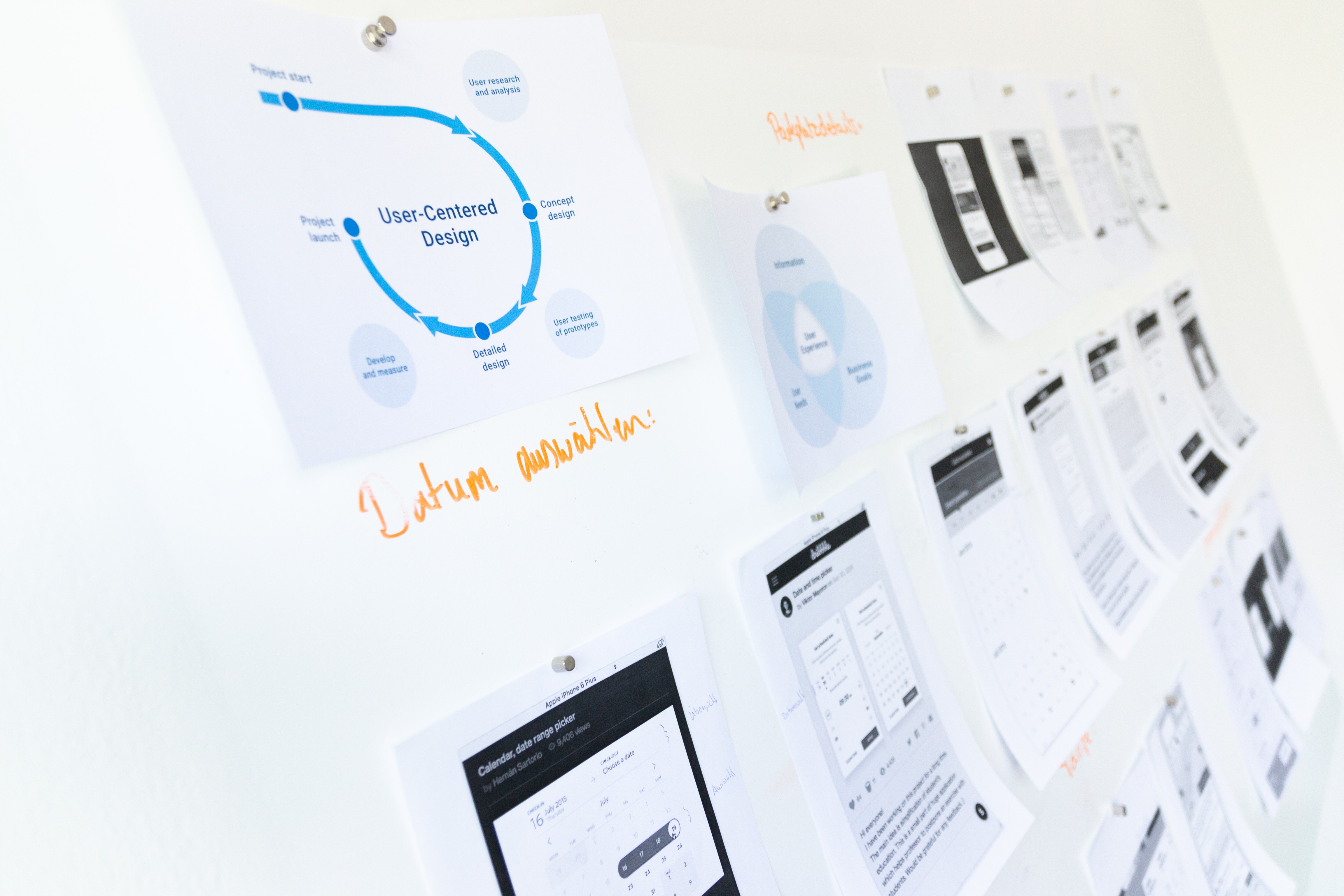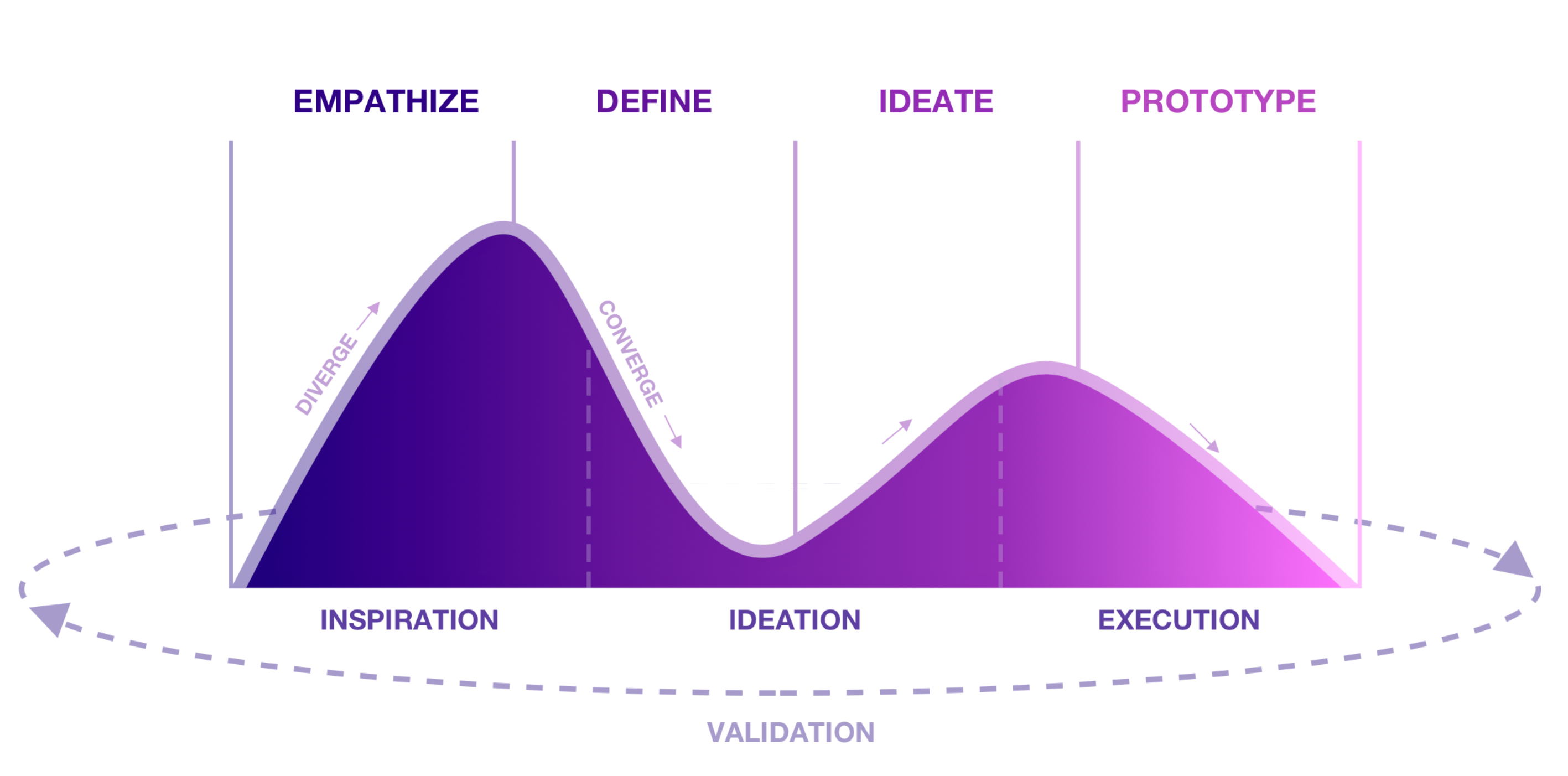Integrating a design thinking mentality into an organization's infrastructure isn’t a simple task at all.
Simply looking at design thinking from a purely qualitative standpoint doesn’t give companies a full spectrum understanding of its value. To understand that value, companies must be able to measure the processes of the design by using a more effective methodology.
A design thinking mentality meshes collaboration and communication across departments and functions to spark new ideas to meet customer needs. Through all aspects of building these processes enabling your organization to be in a better position to chart a path towards customer centricity. Let’s review the intricacies of implementing a design thinking mentality and how your organization can benefit from the implementation of such a program.
What is "Design Thinking" and Why Do You Need It?
Design thinking isn’t a concept that is defined by a concrete set of rules that can be used as a template to be implemented for any company. In fact, it’s more of a mindset that Blade Kotelly, a senior lecturer at MIT and co-instructor of the MIT Professional Education course Mastering Innovation & Design Thinking says it is about “challenging underlying assumptions and getting underneath things in new ways.” In the corporate world, design thinking can be used as a way to frame strategy, design, and development around the end user to create a more customer-centric model (we’ll get to that part later).
Many leaders are choosing to take their existing systems and structures and improve on their designs instead of actually innovating to create new offerings that consumers can get excited about. This can be a recipe for disaster in the long-term as users become unimpressed with new products that are simply a repackaged version of past offerings. Design thinking discourages this notion of recycling ideas, but instead puts a large focus on being more disruptive at all levels of the organization (not just at the executive level).
Design Thinking is an approach used for practical and creative problem-solving that is based heavily on the methods and processes that designers use. The mindset has evolved from the architecture, engineering, and business fields. However, that doesn’t mean that the mindset can’t be applied to fields that are not inherently design-specific. This level of flexibility has allowed design thinking to flourish in companies that are looking to plant the seed of their radical ideas in a plethora of global industries.

5 Stages of Design Thinking
If your organization is able to create a culture around the five (5) stages of design thinking, it will allow your organization to innovate rapidly and provide further value to and expand your customer base.
Stage 1: Empathize
The first stage of the process (Empathy) is the most critical to embody. Without being able to empathize with the wants, needs, and objectives of your target user, you’ll be unable to engage with them on a psychological and emotional level. This phase calls for team members to set aside their assumptions and gather real insights about the user. When you can see through the eyes of your customers and experience their pain points first hand, you’ll have a fountain of inspiration for delivering business value. The accumulation of this knowledge allows you to have a deep understanding of the situation, giving them the opportunity to set aside their own preconceptions to get more insight into the customers’ and users’ wants and needs.
Stage 2: Define
Once your team has empathized with its end user, they can begin the process of defining the problem. This is typically done by gathering all necessary findings from the empathy phase understanding the common difficulties and barriers that end users may encounter. The key for this phase is not to focus all of your attention on the problem itself; instead, focus on the trends that relate to the series of proposed difficulties and barriers. By the end of this phase, you should have formulated a clear problem statement that can be supplemented with solutions and ideas.
Stage 3: Ideation
The third phase in the design thinking process is where ideas need to be formulated inside a judgement-free zone where team members must come up with as many new angles as possible. Team members can use a variety of different brainstorming and provocation techniques to map out the different scenarios that allow them to challenge established beliefs and explore new options and alternatives. In the end, your goal for this step should be to not leave out any ideas for fear of judgement. Even if ideas don’t turn out great, they should be taken as a learning experience to be used for future designs.
Stage 4: Prototyping
Once you’ve narrowed down a select few ideas which you would like to press forward with, you then enter the fourth stage, Prototyping, where your team experiments with turning ideas into tangible products. As you flesh out the prototype, you need to test any constraints and flaws that the product may have, always coming back to the previous three steps to ensure that the prototype still empathizes with the end user. If the prototype is rejected, then it’s back to the drawing board.
Stage 5: User Testing
Once a prototype has been confirmed, it’s time to enter customer experience testing. Although this is noted as the final step, user testing is rarely the end of the Design Thinking process as the results of user testing will often lead team members back to the prototyping phase based on user feedback. It’s only after many iterations of user testing where insights are gathered and prototypes are redefined that a tangible product can be created that specifically solves problems that consumers have been clamoring for.

A Different Approach to Problem Solving
The key to design thinking is to think of the entire design thinking process as a learning experience filled with nonlinear steps. These steps can be repeated as often as necessary to find the solution that works the best to solve the problem at hand. This creativity-based, systematic process seeks to nurture the mindset of curiosity, allowing team members to let go of preconceived judgements to gain a better understanding of the problems.
Design thinking isn’t just for the creative geniuses either. As long as you remain observant and pay attention to the finer details of each stage, you can connect and deepen relationships with the end user to see problems from new perspectives. By challenging assumptions and unconscious constraints in this manner, team members are able to find new ways to innovative and inject value into their brand.
Charting a Path to Customer Centricity
The design thinking approach can enable leaders to create a clear vision that gets the green light from stakeholders since the designs are much more likely to be adopted by customers. The extremely customer-centric focus of design thinking pertains to the creation of new products and services that serve to innovate the customer experience.
By putting humans first and focusing on empathy, design thinking is a key component in encouraging businesses and organizations to consider the real people who use their products and services.By uncovering attitudes, values, emotions, and behaviors, design thinkers can understand how people formulate their beliefs, and chart a path to customer centricity. By creating experiences that improve our lives, real business value can be delivered.
Propane, Digital Agency - San Francisco
1153 Mission Street
San Francisco, CA - 94103
415 550 8692